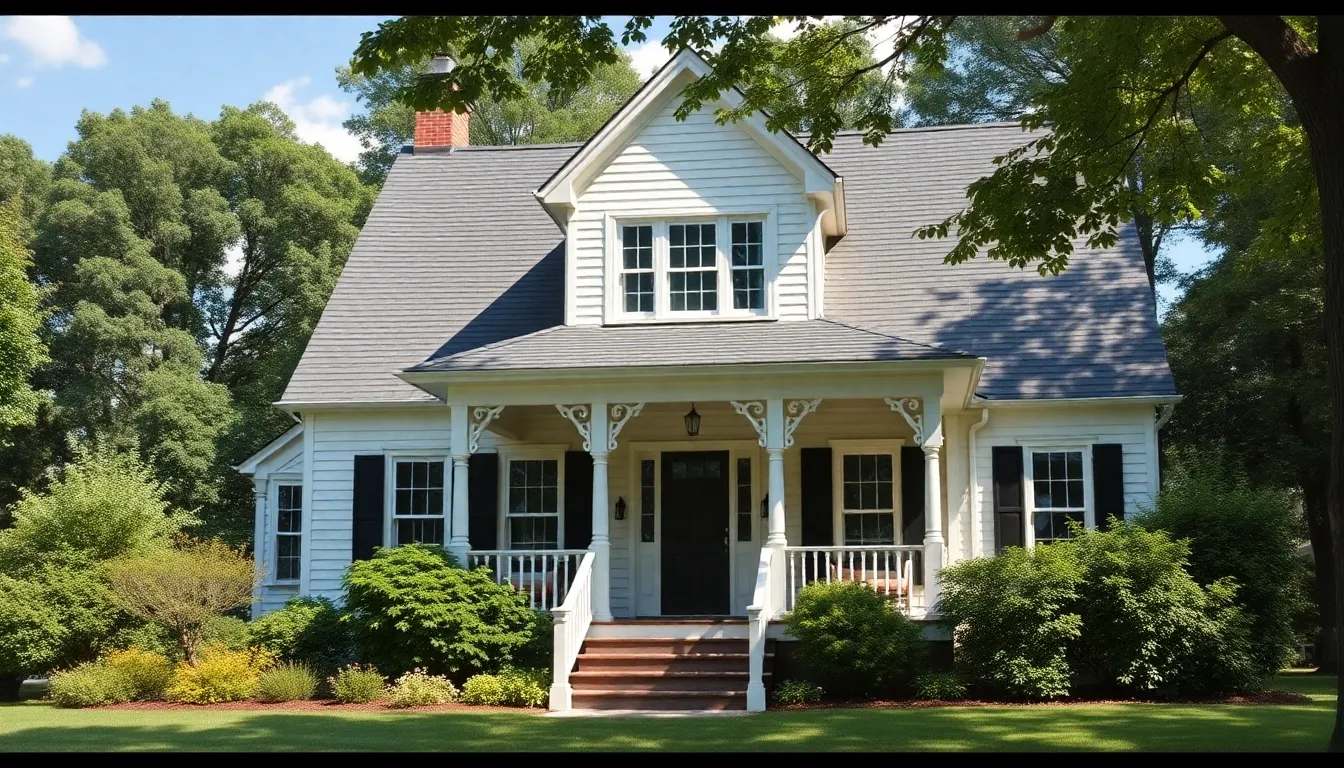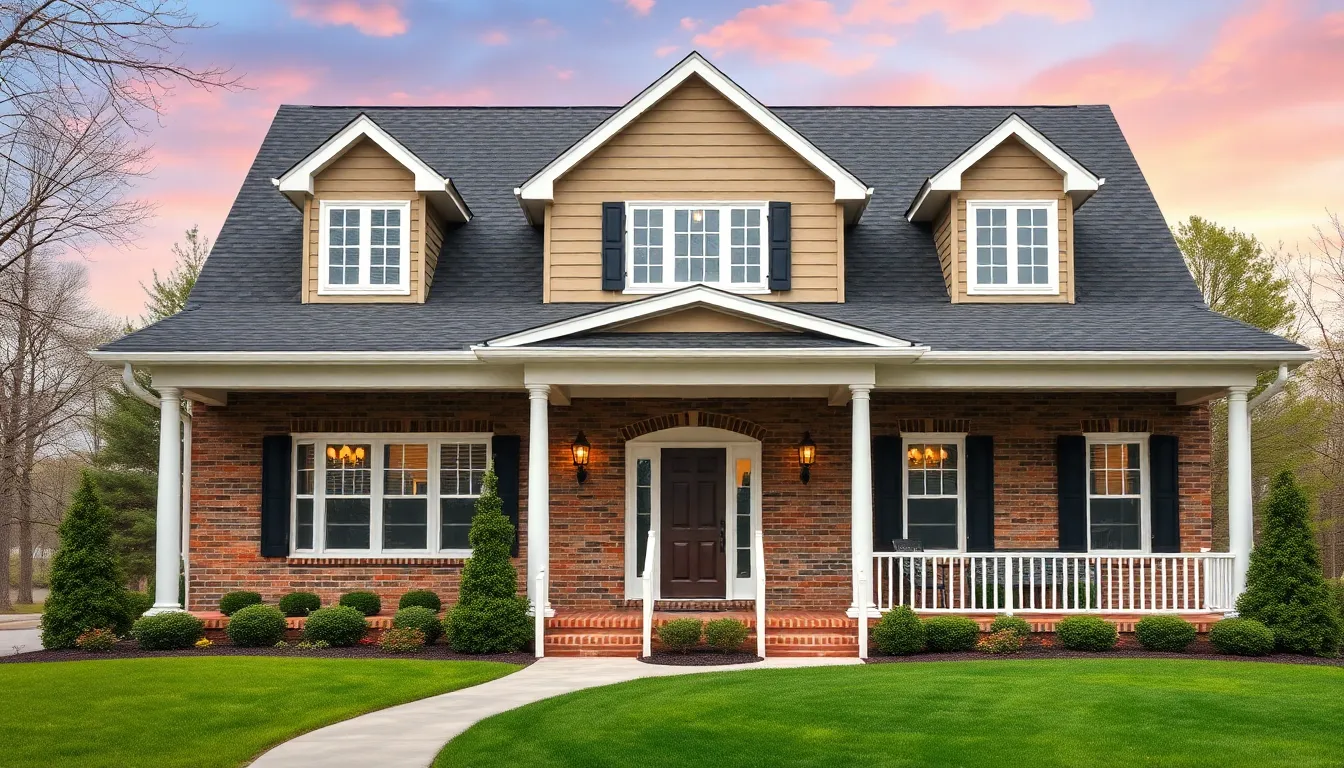Traditional home styles evoke a sense of nostalgia and charm, reflecting the rich history of architecture. These homes often feature classic designs that have stood the test of time, showcasing craftsmanship and attention to detail. From Colonial to Victorian, each style tells a unique story, rooted in cultural influences and regional characteristics.
Exploring traditional home styles offers a glimpse into the past while providing inspiration for modern living. Homebuyers and enthusiasts alike appreciate the warmth and character these designs bring to neighborhoods. Whether it’s the symmetrical facades of Colonial homes or the intricate woodwork of Craftsman bungalows, traditional architecture continues to capture hearts and imaginations.
Table of Contents
ToggleOverview of Traditional Home Styles
Traditional home styles reflect architectural trends from various historical periods, showcasing unique characteristics and regional adaptations. Key styles include:
- Colonial: Originating in the 17th and 18th centuries, Colonial homes feature symmetrical facades, gabled roofs, and evenly spaced windows. These designs draw inspiration from European settlements.
- Victorian: Emerging in the mid-19th century, Victorian homes highlight intricate details, vibrant colors, and varied rooflines. Common features include turrets, bay windows, and decorative trim.
- Craftsman: Popularized in the early 20th century, Craftsman homes emphasize craftsmanship and natural materials. They often showcase exposed beams, wide front porches, and built-in furniture.
- Ranch: Gaining prominence in the 1950s, Ranch homes are characterized by single-story layouts, open floor plans, and large windows. Their design promotes indoor-outdoor living, ideal for families.
- Medieval Revival: Reviving elements from the Middle Ages, Medieval Revival homes feature steep roofs, tall chimneys, and stone accents, often evoking a fairy-tale charm.
Each style encapsulates distinct historical narratives, conveying the artistry and craftsmanship of their time. Traditional homes continue to resonate with many, offering a sense of comfort, stability, and character in contemporary neighborhoods.
Key Characteristics of Traditional Home Styles



Traditional home styles present distinct architectural features and material choices that reflect their historical roots. Understanding these elements offers deeper insights into their unique appeal and durability.
Architectural Elements
Architectural elements significantly define the character of traditional homes.
- Symmetry: Many traditional styles, especially Colonial, embrace symmetrical facades, creating a balanced visual appeal.
- Gabled Roofs: Gabled roofs appear prominently in styles like Colonial and Victorian, adding a classic silhouette.
- Porches: Front porches enhance curb appeal and foster a welcoming atmosphere, common in Craftsman and Southern homes.
- Decorative Trim: Exquisite moldings, cornices, and balustrades enrich the exterior and interior details, prominent in Victorian and Italianate homes.
- Windows: Multi-paned windows often feature shutters, enhancing the charm of various styles, especially Colonial and Federal homes.
Material Choices
Material choices play a crucial role in the authenticity and longevity of traditional home styles.
- Wood: Timber often serves as a primary material, showcasing craftsmanship and organic aesthetic in Craftsman and Victorian homes.
- Brick: Brick construction provides durability and timeless appeal, with Colonial and Georgian homes often featuring this classic material.
- Stone: Stone accents evoke a rustic feel, found in Medieval Revival styles, enhancing the fairy-tale quality.
- Stucco: Stucco finishes create a smooth, clean look, commonly seen in Spanish Revival and Mediterranean homes.
- Roofing Materials: Traditional homes frequently utilize shingles, tiles, or thatch, with materials reflecting the regional climate and style preferences, such as slate in Colonial roofs.
Each architectural element and material choice contributes to the overall aesthetic and cultural significance of traditional home styles, making them enduring favorites among homeowners.
Popular Types of Traditional Home Styles
Traditional home styles encompass a variety of designs, each offering unique architectural elements and historical significance. Below are some of the most popular types of traditional home styles.
Colonial Homes
Colonial homes feature symmetrical facades and steep gabled roofs, characterized by evenly spaced windows and a central front door. Built primarily between the 1600s and 1800s, they reflect European architectural influences and are often constructed from brick or wood. Common features include decorative shutters, large chimneys, and classic columns. The simplicity and formality of Colonial designs resonate with many homeowners seeking timeless elegance.
Victorian Homes
Victorian homes gained popularity during the mid-to-late 19th century and are known for their ornate details and eclectic styles. With decorative trim, turrets, and vibrant color schemes, these homes often include bay windows and intricate patterns. Architectural features such as wrap-around porches and asymmetrical shapes enhance their charm. Victorian designs tell stories of the era’s craftsmanship and provide a whimsical aesthetic that captivates onlookers.
Craftsman Homes
Craftsman homes emphasize handcrafted elements and the use of natural materials. Popular from the early 1900s, these homes showcase low-pitched gabled roofs, wide eaves, and exposed rafters. Intricate woodwork, built-in furniture, and artistic tile details highlight their unique character. Craftsman designs foster a sense of warmth and coziness, making them appealing to those who appreciate fine craftsmanship and earthy aesthetics.
Regional Variations in Traditional Home Styles
Traditional home styles exhibit regional variations that reflect local climates, materials, and cultural influences. Each area boasts distinctive architecture that narrates its unique story.
Northeastern Styles
Northeastern traditional homes often exhibit Colonial and Cape Cod influences. Colonial homes display symmetrical facades and gabled roofs, aligning with the region’s history dating back to the 17th century. Cape Cod houses feature steep roofs and dormer windows, designed to withstand harsh winters. Materials such as wood siding and brick are common, enhancing durability. Both styles prioritize functionality and aesthetics, appealing to homeowners who appreciate historical heritage.
Southern Styles
Southern traditional home styles showcase elements such as large porches and expansive layouts. The Greek Revival style, characterized by tall columns and pediments, reflects the influence of ancient architecture. Antebellum homes often feature intricate moldings and high ceilings, catering to the warm climate by promoting airflow. Materials like clapboard and stucco contribute to the charm. These homes emphasize a relaxed lifestyle and hospitality, making them popular among families.
Western Styles
Western traditional homes often draw from Craftsman and Pueblo Revival styles. Craftsman homes emphasize handcrafted details and natural materials like wood and stone. They typically include wide eaves and built-in furniture, fostering a harmonious connection with nature. Pueblo Revival homes feature adobe-style construction, flat roofs, and earthy tones, inspired by Native American architecture. Both styles highlight the importance of integrating indoor and outdoor spaces, appealing to those who value a natural lifestyle.


